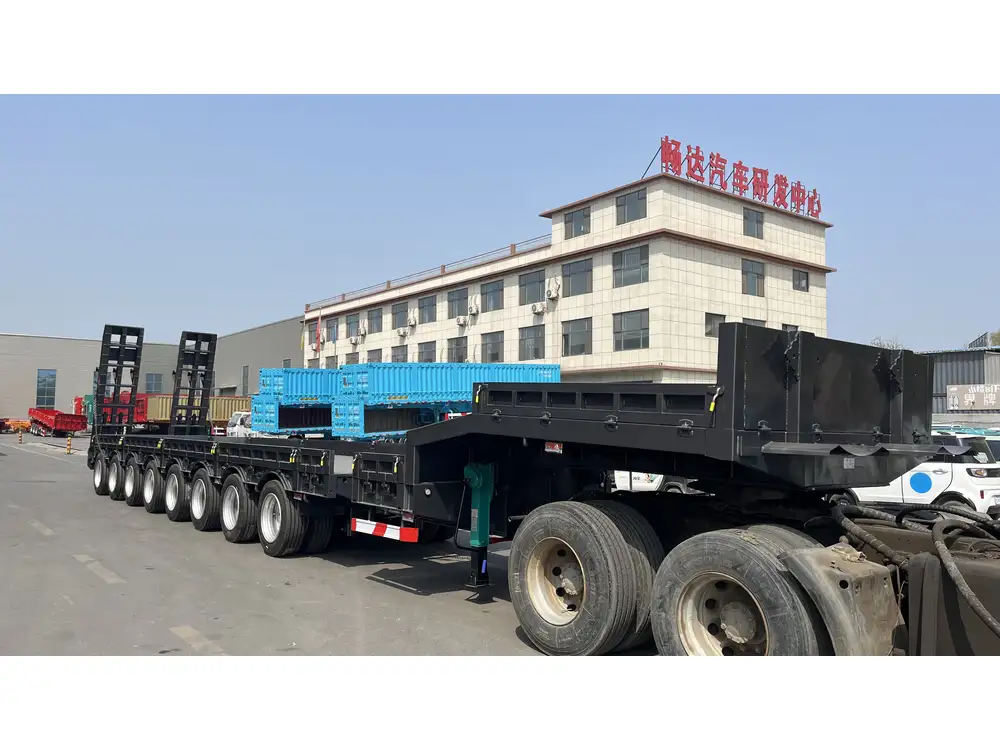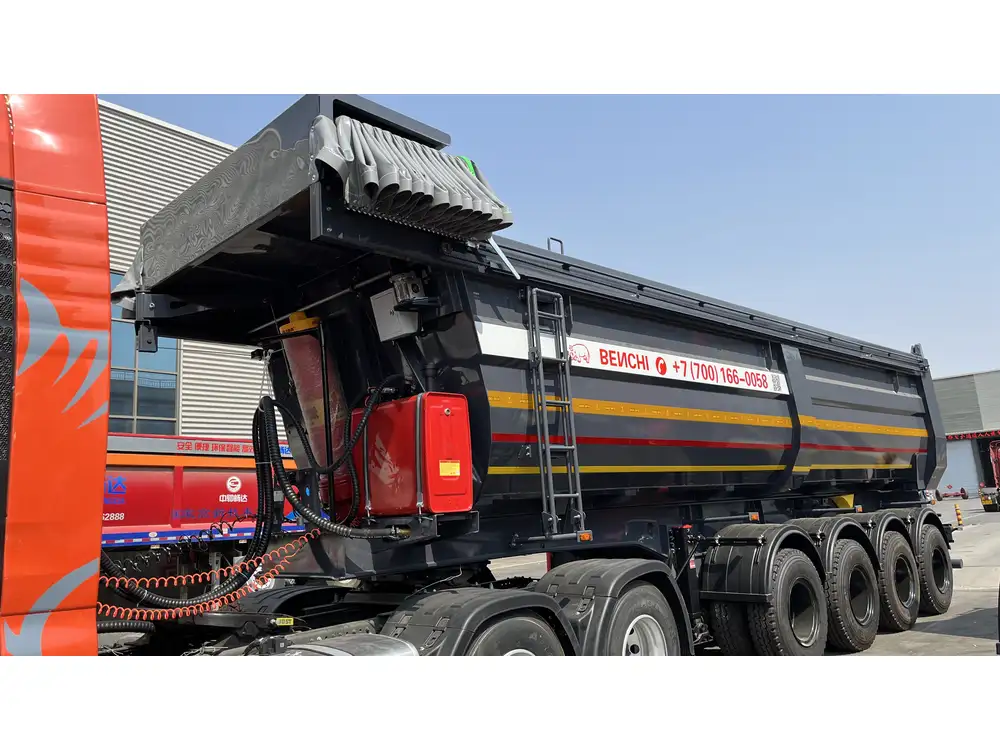Understanding the carrying capacity of semi-trailers is crucial for transport companies, logistics managers, and manufacturers alike. This in-depth analysis provides vital insights into weight limits, types of trailers, cargo considerations, and regulatory standards to help you make informed decisions about your hauling needs.
1. Understanding Semi-Trailer Basics
1.1 Definition of a Semi-Trailer
A semi-trailer is a trailer that doesn’t have a front axle and relies on a tractor unit to bear its weight. It connects to the truck’s fifth wheel, allowing for stability while enabling payload versatility. This fundamental design feature lays the groundwork for a deep dive into semi-trailer capacities.

1.2 Common Types of Semi-Trailers
Different types of trailers accommodate various cargo types, each with unique weight capacities:
| Trailer Type | Description | Maximum Weight Capacity (lbs) |
|---|---|---|
| Flatbed | Open platform, ideal for oversized loads. | 48,000 – 60,000 |
| Dry Van | Enclosed trailer designed for general cargo protection. | 45,000 – 50,000 |
| Reefer (Refrigerated) | Insulated trailer for temperature-sensitive goods. | 43,000 – 45,000 |
| Tanker | Designed for liquid loads like fuel or chemicals. | 35,000 – 50,000 |
| Lowboy | Low-profile trailer for heavy machinery and equipment. | 40,000 – 90,000 |
This table highlights the distinctions between various semi-trailer types, revealing a spectrum of specifications determined largely by the intended use.
2. Maximum Weight Limits: The Law of the Land
2.1 Legal Weight Limits in the U.S.
In the United States, federal regulations dictate maximum weight limits for commercial vehicles, including semi-trailers, under the Federal Bridge Law. These regulations are vital to ensure safety, prolong road infrastructure lifespan, and mitigate environmental impacts.
- Federal Gross Vehicle Weight (GVW): The maximum weight a vehicle can legally carry on the highway is 80,000 lbs.
- Axle Weight Limits: Single axles are limited to 20,000 lbs, while tandem axles are capped at 34,000 lbs.

2.2 State-Specific Regulations
While federal regulations provide a baseline, individual states may enforce stricter rules. Always verify local weights and dimensions to avoid fines and ensure compliance. For example, California imposes additional restrictions for certain geographic areas and types of cargo.
3. Factors Influencing Carrying Capacity
3.1 Weight Distribution
Proper weight distribution is essential for stability. Overloading a single axle can result in excessive wear and potential accidents. Implementing an effective loading strategy that balances weight across the semi-trailer is crucial.

3.2 Trailer Configuration
The design and setup of a semi-trailer greatly affect its capacity. Double-deck trailers can carry more payload but may require unique considerations for legal weight distribution. Alternately, a standard flatbed trailer may limit height but provide more flexibility in loading methods.
4. Calculating Load Capacity
4.1 Finding Your Semi-Trailer’s Specific Capacity
To ascertain how much your specific semi-trailer can carry, follow these steps:
Determine the Trailer’s Gross Vehicle Weight Rating (GVWR): This information can be found in the owner’s manual or on a sticker affixed to the trailer.
Subtract the Trailer’s Empty Weight: The tare weight of the trailer must be subtracted from the GVWR. This equals the maximum allowable load.
Consider Axle Limits: Ensure the weight does not exceed individual axle restrictions as per federal and state regulations.

Example Calculation
Let’s consider a dry van trailer with a GVWR of 50,000 lbs and a tare weight of 15,000 lbs:
[ \text{Maximum Load} = \text{GVWR} – \text{Tare Weight} = 50,000 – 15,000 = 35,000 \text{ lbs} ]Thus, this specific dry van trailer can safely carry 35,000 lbs of cargo, keeping legal limits in mind.
5. High-Value Cargo: Specific Considerations
5.1 Weight vs. Volume
While weight is a primary factor, volume can be a limiting factor as well, especially when transporting bulk items. A trailer may be rated for a particular weight but may reach its volume capacity before that weight limit is met.

5.2 Fragile or Perishable Goods
Transporting high-value, delicate, or perishable cargo requires special handling. Reefer trailers, designed to maintain temperature, reduce weight capacity but enhance value protection significantly. In such cases, strategic planning is essential to optimize both weight and value.
6. Industry Standards and Best Practices
6.1 Weigh Stations: The Checking Ground
Transportation companies must routinely stop at weigh stations to ensure compliance with legal weight limits. These stations help maintain road safety and compliance with transportation laws.

6.2 Load Securement
Properly securing cargo is critical to preventing accidents and damage during transit. Always follow the National Highway Traffic Safety Administration (NHTSA) recommendations for load securement.
7. Advanced Load Management Techniques
7.1 Utilizing Load-Weight Distribution Tools
Investing in load distribution tools can lead to more precise management:
- Weight Management Software: Programs that help calculate weight limits based on cargo configurations.
- Load Cells: Devices that provide real-time weight readings and ensure compliance.

7.2 Training and Education
Providing training for drivers and loaders on proper loading techniques can significantly reduce the risks associated with overloading and improper weight distribution.
Conclusion
Understanding how much a semi-trailer can carry is intricately linked to various factors, including vehicle type, legal limitations, weight distribution, and adherence to safety regulations. By leveraging the insights shared in this guide, operators can navigate the complexities of semi-trailer loading, ensuring optimized performance, safety compliance, and the efficient delivery of goods.
By maintaining informed operations and adhering to regulatory demand, businesses can facilitate smoother logistics, maximizing both operational efficiency and cost-effectiveness. With ongoing advancements in technology and logistics management, the potential for improvement in how we use semi-trailers continues to grow, promising an even more efficient future in freight transportation.



